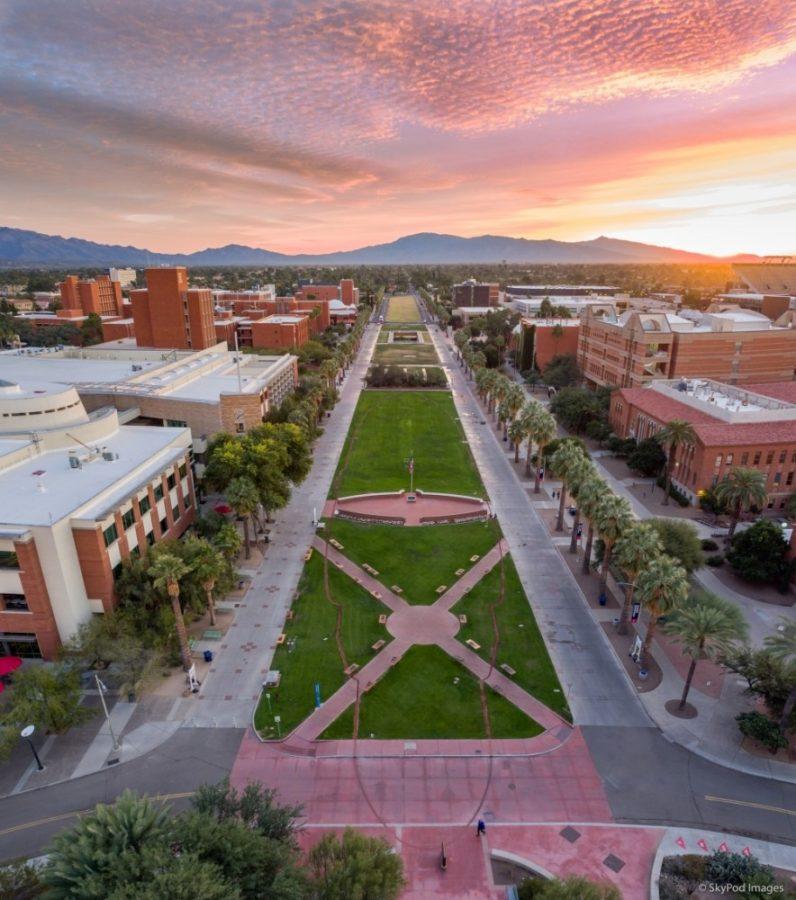Here we are, 55 years after the Civil Rights Act of 1964 and the Civil Rights Movement of the late 50s and 60s and as a nation we are still grappling with the painful (pain-filled) issue of race-ism, a reality in our society and the world, yet the most difficult topic to discuss openly. The verbal and violent physical assault on a black student by two white students last Tuesday night served as a shocking reminder that race-ism is very present within our campus. Yet, while this act warrants full condemnation as a hate crime and is deserving of the full consequences of the law, it’s important to understand that the national political and social climate is reflected in our campus environment and has everything to do with the boldness of such racist and violent acts. The students would not have acted the way they did had they been concerned about the consequences, including arrest, conviction, imprisonment and even expulsion from the university. The students were acting out of what educators call “white privilege”, in which the color of one’s skin determines the manner that one behaves and functions in the society.
The UAPD were initially inclined to soften the charges and seek a diversion program to discipline the students and only formally charged the students after the community protest at Old Main on Friday. Let’s switch the scenario: what if two black, male students hurled racist epithets toward a white, male student and then proceeded to beat him up? Would the police have been so restrained in their handling of the perpetrators? Had the culprits been black, arrest (often associated with force, even brutality) would be the first response, followed by being taken to jail, the normal lot for people of color accused of crimes even though their guilt may not be immediately established. For white people, the law works effectively: one is innocent until proven guilty. For black people and other people of color, the law works conversely: one is presumed guilty until innocence is firmly established. The nation’s jails and prisons housing disproportionately huge numbers of people of color are testimony of this fundamental flaw in the administration of law enforcement and justice. Many in the Black community still mouth “justice” with visceral skepticism: “It’s just…us!”
The federal law that classifies such incidents, as the one last Tuesday night, as a “hate crime” reflects the hideous nature of the incident. Yet ironically, it obscures the manner that the society and nation breed such race-ist violence by obscuring, denying and silencing the historical and contemporary economic, social, political and cultural context out of which race-ism was borne. As James W. Loewen illustrated in his classic 1995 text, Lies My Teacher Told Me: Everything your American History Textbook Got Wrong, the educational system perpetuates racist ideologies about Indigenous people in the Americas, Africa, Asia and the Pacific by teaching that these peoples are devoid of history, culture and “civilization” and thus inhuman and deserving of inhumane treatment. The vibrant and thriving early civilizations of Indigenous nations in Arizona (Anasazi, Hohokam and today reflected in the Tohono O’odham, Yoeme, Diné and other Indigenous communities in the Americas and the Caribbean) were violently disrupted, through genocide, by European colonization and the resettlement of Native Americans in Central and South America and the Caribbean (almost 100 million, Roxanne Dunbar-Ortiz writes in An Indigenous Peoples’ History of the United States). So few teachers, faculty and students realize that it was the Iroquois Confederacy, circa 1142 that inspired much of this nation’s constitutional and governance principles especially on peace, women’s rights and democratic participation. The state suppression of such knowledge in schools, including of Raza, the Mexican American Studies program at the Tucson Unified School District, is a clear case in point. Further, the kidnapping, transporting and forced enslavement of African people from nation states in West and Central Africa (Yoruba Kingdoms, Ashanti Confederations Kongo Kingdoms, etc.) to work from sunup to sundown for no compensation on plantations in the Americas from the early 1600s until the latter part of the 19th century, laid the foundation for the emergence of the largest economy in the world today: the United States.
Such histories and social studies are simply footnotes in most school curricula, fueling a pervasive educational and societal racism that is now entrenched following the dismantling of ethnic studies programs and classes in the aftermath of the Civil Rights Movement in the 1960s and 1970s. Similarly, the contradictions around Mexico have been obscured. The lands that are Arizona, California, New Mexico, Nevada, Utah, southwestern Colorado, southwestern Wyoming and Texas, were forcibly annexed from Mexico as part of the Treaty of Guadalupe Hidalgo in 1848 following the Mexican-American War of 1846-1848. Yet, these were all lands in which Indigenous people lived as guardians, not as “undiscovered” booty for Mexico to sell or for the United States to unethically and illegally acquire, since Indigenous people were not involved in the signing of the treaty. As immigration issues rise to the fore today and the construction of a border wall violates Indigenous Tohono O’odham lands and rights across United States and Mexico today, it is worth noting that after 15,000-20,000 Chinese workers were instrumental in constructing the Transcontinental Railroad in the west in the 1860s, the government passed the Chinese Exclusion Act of 1882 that prohibited Chinese immigration to the United States, a racist act leading to preventing Chinese people from testifying in court and other civil rights violations. We know more about the racism that placed Japanese Americans in internment camps (akin to detention camps where thousands of Latin American migrants are currently held in places like Fort McAllen, Texas) including in Arizona during WWII, fearing that Japanese Americans would side with Japan in the attack on Pearl Harbor, Hawaii, ironically, on the lands belonging to Indigenous Hawaiian people that was neither Japan’s nor the United States’ and which neither country had the right to bomb and occupy.
Race-ism is thus built into the social fabric of our nation. If educational institutions like schools and universities do not reflect curricula that teach the history of the construction and entrenchment of race-ism, then they become part of the problem of, in fact, teaching racism, the ugly result of what was witnessed (and video-taped) on the night of Sept. 10. One of the assaulting students yelled, “I’m a god!” while being videotaped by students. Indeed, this is what miseducation produces — crimes of hatred, violence and death. Faculty on our campus have a particularly foundational role to play in addressing the problem on our campus, with the kinds of diverse cultural and multi-ethnic materials intrinsic to any excellent education, in all colleges and departments, from science, the medical school and public health to business, law, education, art history, agriculture and the social sciences and humanities. Not to intentionally and carefully conduct research to find such materials and continuing to obscure and deny that structural and systemic issues of race-ism are real and are not going away anytime soon, is to be an active part of the problem. Resisting race-ism is not being “anti-white,” on the contrary, it is struggling to restore all of us as members of only one human race.
Let the dialogue, workshops, seminars, classes and other educational forums on race-ism immediately begin and intensify so that we can collectively resolve the problems on our campus and in our nation. I challenge our community to work to overcome the sharp racial and ethnic divide among us, to systematically abolish racism and to become a role model for intercultural higher education on campuses like ours.
Julian Kunnie is a professor of religious studies and classics, affiliate faculty in Middle Eastern studies, North African studies and Latin American studies. His courses are offered in Africana studies, American Indian studies, anthropology, humanities and global studies.
Opinion pieces, guest commentary, letters and online comments do not represent the opinion of the Daily Wildcat.









